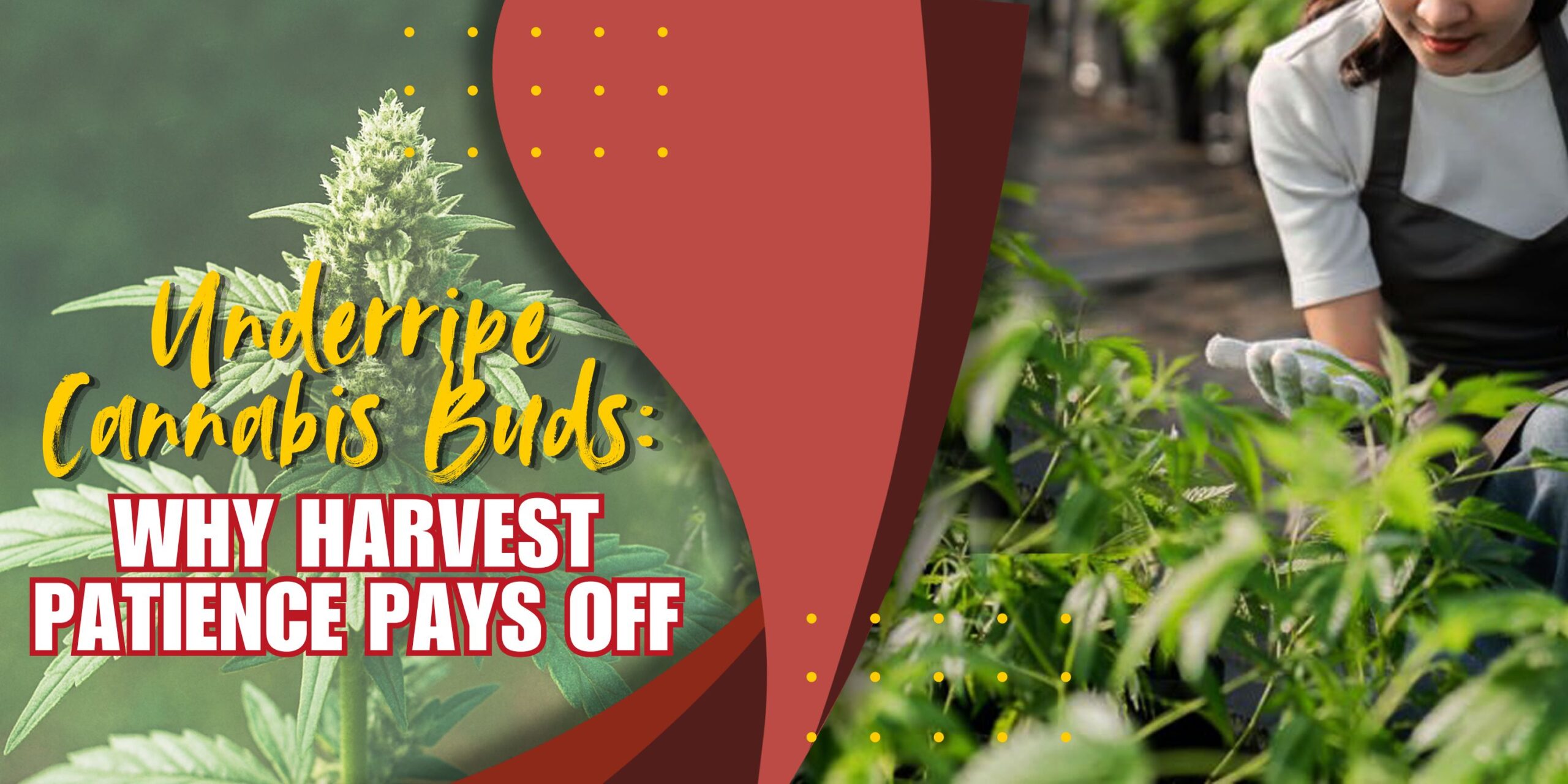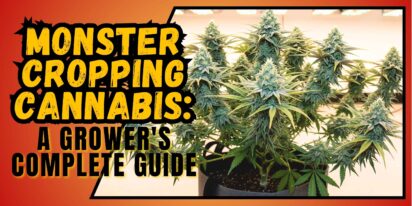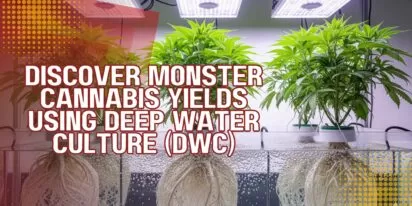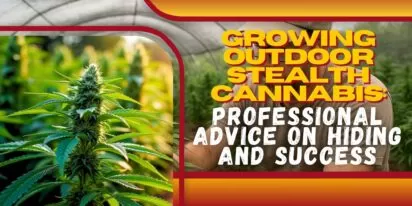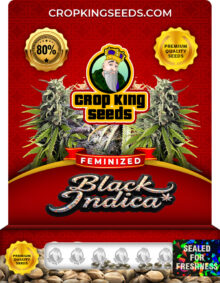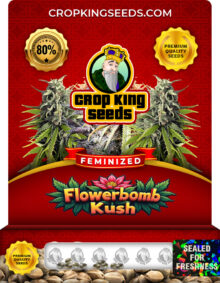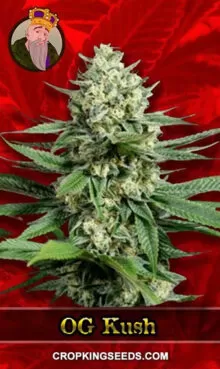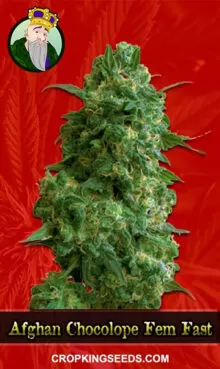Harvesting cannabis is a science as much as an art. Among the most important aspects frequently missed is the ideal time to harvest, given that all growers focus on nutrients, lighting, and training methods. Early harvesting of cannabis plants can significantly affect their potency, productivity, flavor, and overall quality. This all-inclusive guide covers why under ripe buds are a major error and how to prevent early picking. You should know the indicators of under-ripeness, how they influence the final result, and what actions you may take to stop yourself from harvesting your plants too soon. Every stage of growth is responsible for some necessary development of cannabinoids, terpenes, and general plant health. This book offers real insight and useful advice to guarantee you obtain the greatest yield, hence surpassing the conventional pointers.
Identifying Under-Ripe Cannabis Buds
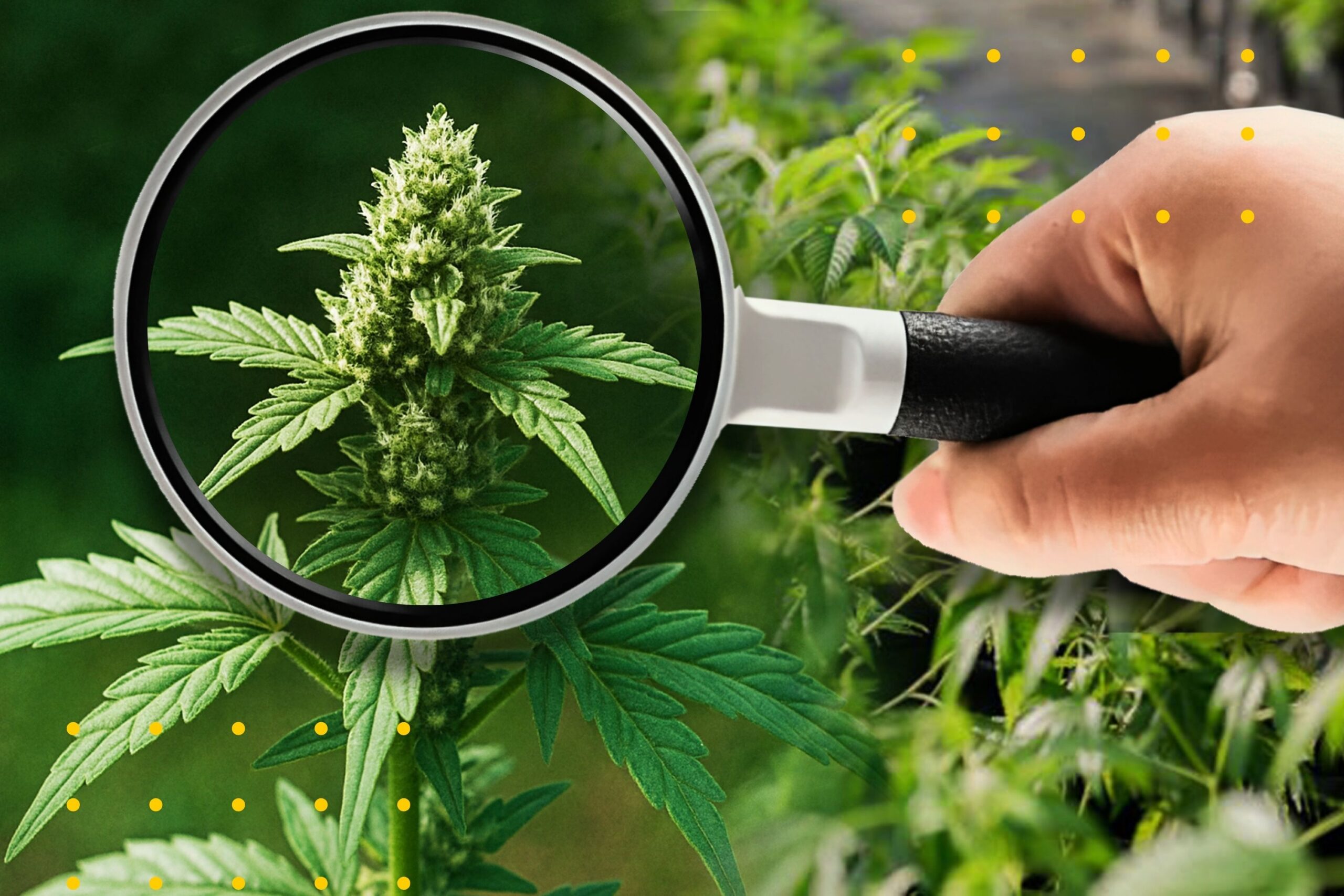
Underripe cannabis flowers are immature buds that have not finished their development cycle. Though tempting with their expanding calyxes and sticky trichomes, their internal chemistry and structural integrity reveal a contrasting image of incompleteness. Finding underripe buds is more than just looking at their appearance; it’s also about knowing how they react under magnification and evaluating their development timeline. Particularly intriguing are the trichomes, tiny resin glands holding terpenes and cannabinoids.
Visually, underripe buds will usually have:
- Sparse trichome coverage with primarily clear, glassy heads, indicating the cannabinoids have yet to develop.
- Mostly white and straight, rather than curved and darkened, pistils indicate the plant has not yet reached complete maturity.
- As the blooms keep filling out their resin content and total bulk, a fluffy, airy bud structure without solidity emerges.
Trichomes on immature buds will be clear and lack the hazy or amber hue that indicates peak cannabis production using a magnifying device such as a jeweller’s loupe or digital microscope. The terpenes also haven’t fully developed, typically causing a grassy or hay-like smell instead of the strain’s distinctive aroma. The flavour and strength are affected by this lack of trichome and terpene development; the cannabis is less pleasurable and less useful for both therapeutic and recreational uses.
The Cost of Premature Harvesting
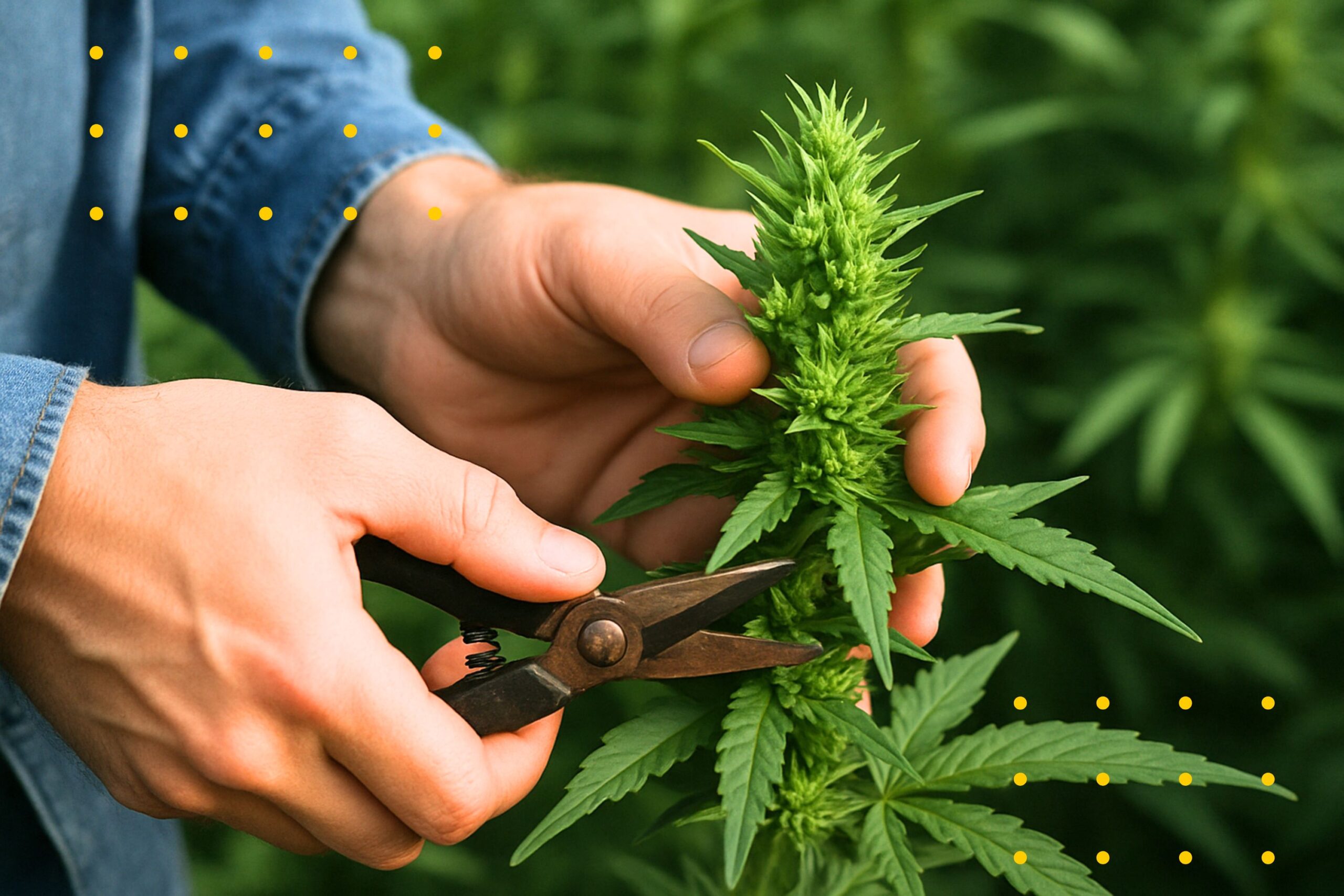
Early cannabis harvesting is fraught with issues that undermine the value and consumer happiness of the ultimate product. While early cutting may seem to be a quick way to reduce the waiting time before enjoying the ripe buds, it has long-term consequences on potency and user experience. Harvesting cannabis too soon robs users of the entire spectrum of benefits mature buds provide, hence subjecting them to a watered-down, unsatisfactory experience.
Lower Cannabinoid Content and Potency
All cannabinoids, including THC and CBD, peak only after complete maturity. Mostly formed of precursor compounds like CBG, clear trichomes transform into more active molecules as the plant nears harvest. Early harvesting stops this process, hence reducing the total THC or CBD concentration and producing milder effects. Without full maturation, the plant will also generate fewer terpenes, which directly link to much of the scent and therapeutic properties of the plant. Consequently, an under-ripe bud will provide a less powerful and weaker high, which also reduces its therapeutic efficacy.
Unpleasant Taste and Aroma Profiles
Volatile chemicals called terpenes give each cannabis strain its smell and taste. Maturing late in flowering, terpenes decay fast following harvest. Early harvesting of the plant prevents these fragrant oils from fully developing, which leads to dull, grassy, or sometimes sour-tasting buds. Terpenes are also part of the entourage effect, in which cannabinoids and terpenes cooperate to offer more therapeutic efficacy. Early harvest steals the cannabis of its whole taste character, which is less pleasant for connoisseurs and those looking for a particular fragrant impact.
Reduced Bag Appeal and Lower Yields
Immature buds are also smaller, denser, and less resinous. This condition directly means lower weight and poorer quality. Upon closer study, the immaturity also causes bad, light-green colouring and immature resin glands, which give the buds an amateurish look and feel. Especially in competitive legal marketplaces, the look of the bud is a major factor in consumer perception. Selling a lower-quality crop will be far more challenging, and a lower yield will result in less overall inventory for sale.
The Science of Bud Maturation
Knowing how cannabis plants develop helps one decide when, during the late blooming stage, to trigger the plant to intensify its production and when to harvest. Hormonal shifts in the late blooming stage cause the plant to go into overdrive to produce cannabinoids and resin. In preparation for reproduction, trichomes act as chemical factories that increase THC, CBD, and terpene production. The plant cannot fully produce the chemical composition that gives cannabis its strong and sophisticated flavour without allowing this last stage of development to pass.
Trichome development can be divided into three phases:
- Clear—immature with minimal cannabis concentration. At this point, the plant is still concentrating on growth rather than cannabinoid manufacture.
- Peak THC concentration is, most psychoactive. With significant cannabinoid and terpene concentration, the plant is most powerful at this stage.
- Amber: More sedating, rising CBN, decomposing THC. Though amber trichomes suggest a more sedating effect, they nonetheless have good medicinal characteristics that offset the psychedelic traits of the plant.
Pistils also signify harvest. As cannabis flowers mature, white pistils darken and curl inward. The plant is at peak maturity when 70–90% of pistils have darkened, and most of the ripe trichomes become hazy with 10–20% amber. Tracking both trichome development and pistil alteration helps farmers to decide when to harvest for the best quality outcomes.
Avoiding Early Harvest: Best Practices
Patience is a quality. Harvest time decisions should be made by observation and testing rather than by calendar days. Our suggested methods are as follows:
1. Use Magnifying Tools to See Trichomes
Examine trichomes every day with a 60x jeweller’s loupe or digital microscope during the past two weeks of blossoming. This way, you see the live ripening process and choose the best moment to cut. By closely monitoring trichomes, you will know exactly when they change from clear to hazy, which indicates peak THC generation.
2. Watch Pistil Maturity
Immature buds show white pistils. Wait until most of them have darkened and turned inwards. For the best estimate, combine this visual signal with trichome growth. This pistil and trichome combination observation will provide a far better indication of whether or not your cannabis is harvest-ready and will make it more probable that you will not harvest too early.
3. Follow Your Strain’s Schedule
Flowering periods vary among several strains. Understand your genetics. While indicas will be finished in 8–9 weeks, sativas will need 10–12 weeks to completely mature. Breeder information should be used as a guide, not a law. How long a strain takes to develop could be influenced by genetic variation as well as environmental elements such as temperature and intensity of light. Knowing the specific needs of the strain you are growing helps you to more properly predict the right moment to harvest.
4. Flush, but don’t rush
Don’t let the last 10–14 day appropriate flush justify early harvesting. Even during flush, the plant keeps maturing. Allow it. Flushing removes leftover nutrients, therefore rendering the ultimate product smoother to taste and smoke. Rushing the procedure, then, disrupts the natural process of the plant growing and makes it less powerful and less tasty.
Drying and Curing Underripe Buds: A Losing Fight
Underdeveloped blossoms cannot be offset even by professional drying and curing. No amount of post-processing will help a bud lacking cannabinoid and terpene concentration at harvest. Instead, you have cannabis that burns aggressively, smells like hay, and has poor effects. The drying and curing procedure aims to enhance the effects and flavour of mature buds, not to compensate for an early harvest.
When cured properly, mature buds go through chemical stabilization that increases strength, smoothness, and taste complexity. Underripe buds lack the chemical profile required to gain from this process. Patience throughout both the blossoming and post-harvest stages is therefore essential for obtaining the greatest possible cannabis.
How to Save an Early Harvest Error
Should you have already harvested too early, think about these recovery suggestions:
- Instead of smoking flowers, taste them, and even if you do, use the buds to create edibles or extracts. Cannabis harvested early still has cannabinoids that can be decarboxylated and infused into oils. Even if the plant is not yet completely ripe, edibles and concentrates can be strong.
- We recommend a longer curing period. Longer curing will lower the chlorophyll and highlight the taste, even if it will not increase the strength. The plant’s gradual drying lets more starches and sugars decompose, which helps produce a smoother final product.
- Combine with joints or extracts of mature flowers to offset the dull impact. Although it won’t make the immature buds stronger, combining them with mature blossoms could produce a more balanced smoking session.
But damage control is much less desirable than prevention. The best way to guarantee a successful harvest is to find the right period sooner rather than later and allow nature to run its course.





